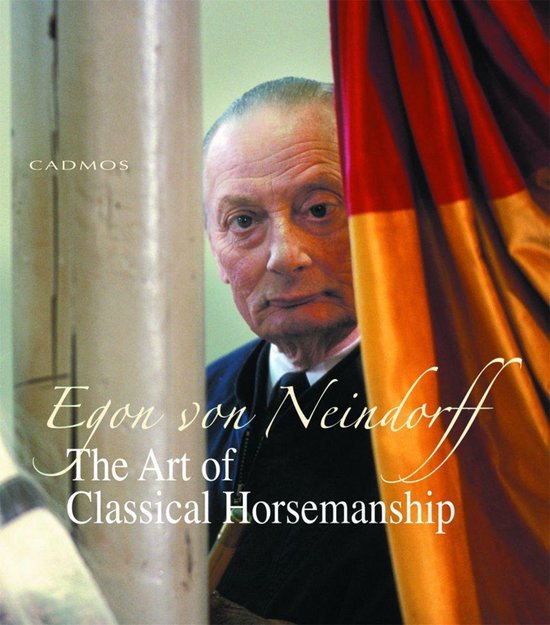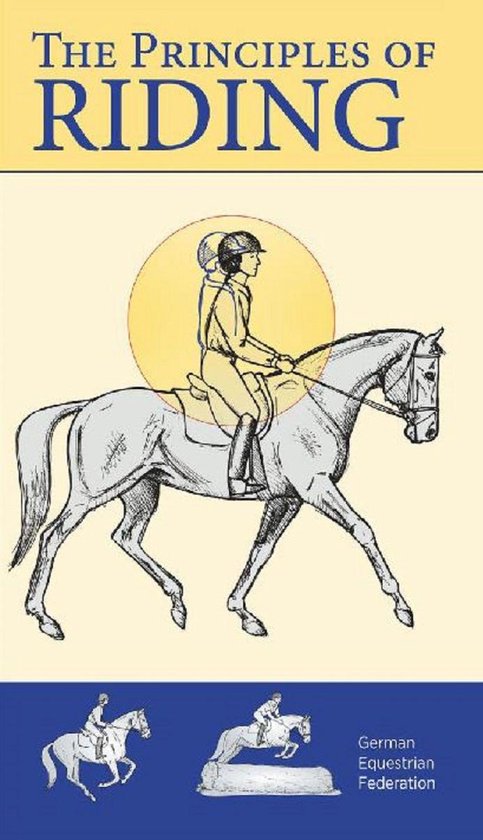
Das DressurPferd / The Dressage Horse
An illustrated textbook for perfect performances in dressage.
With two gold and two silver medals at both the Olympic Games and the World Championships, and with five gold, four silver and two bronze medals at European Championships, Harry Boldt was one of the greatest competitive dressage riders in the world for over two decades. Only very few riders have a comparable wealth of experience in both producing dressage horses and riding internationally.
Harry Boldt passes on this experience in his book The Dressage Horse. Not only does he describe how the ideal training of a dressage horse up to the highest levels should progress, but he also, and more importantly, demonstrates which different training methods he himself has used, which methods suit which horses best, and how one can successfully re-school incorrectly-trained dressage horses. It is a practical book for the discerning rider, authored by a man who writes in the same way as he talks: simply and understandably. This is what sets his book apart from those by many other ‘riding theo-rists’.
The text is complemented by a unique abundance of photographic and illustrative teaching material. The combination of photographs, illustrations and precise textual explanations is the most efficient method for conveying expert riding knowledge. On his Olympic and World Championship-winning horse Woyceck, the author demonstrates dressage movements to perfection. Rarely can one find, for example, pictures of such harmonious transitions between piaffe and passage or such straight and uphill flying changes as in this book.
Photographic sequences with slow-motion pictures at the rate of nine shots per second break the dressage movements down into individual components that the human eye could not otherwise per-ceive. Next to these, numerous photomontages clearly demonstrate the movement processes in a single picture. A further teaching aid is provided by the diagrams accompanying each dressage movement. They explain precisely and chronologically the correct interaction of weight, leg and rein aids.
The large didactic part of this book is complemented by an extensive documentation of the historical development of dressage riding and a report on the 1978 World Championships in Goodwood. These World Championships were the last major international outing of Harry Boldt as a dressage rider.
Harry Boldt was assisted in the production of his book by the famous dressage riders Dr Reiner Klimke, Herbert Kuckluck, Dr h.c. Josef Neckermann, Herbert Rehbein, Dr Uwe Schulten-Baumer, Willi Schultheis, Gabriela Grillo and Maria Günther. They all portrayed many of the most famous German dressage horses of post-war times. For the new 2011 edition, many more top dressage horses have been added. Their riders Klaus Balkenhol, Nadine Capellmann, Edward Gal, Anky van Grunsven, Anne Grethe Jensen, Margit Otto-Crepin, Ulla Salzgeber, Monica Theodorescu, Nicole Uphoff and Isabell Werth have remained faithful to the book’s original style and described the temperament and charac-ter of the brightest stars of today’s dressage, elucidating their strengths and weaknesses, quirks, diffi-culties in training, conformational and movement features, in addition to other interesting anecdotes.
Willi Schultheis, who was the Germany national team coach at the time the first edition of this book was published, provided his private photo collection, contributed to the historic part of the book and commented on Boldt’s final rides at the World Championships in Goodwood in 1978.
This revised edition of The Dressage Horse by Harry Boldt is a modern, comprehensive textbook on dressage riding, and is a treasure trove even for those already knowledgeable about this magnificent sport.
With two gold and two silver medals at both the Olympic Games and the World Championships, and with five gold, four silver and two bronze medals at European Championships, Harry Boldt was one of the greatest competitive dressage riders in the world for over two decades. Only very few riders have a comparable wealth of experience in both producing dressage horses and riding internationally.
Harry Boldt passes on this experience in his book The Dressage Horse. Not only does he describe how the ideal training of a dressage horse up to the highest levels should progress, but he also, and more importantly, demonstrates which different training methods he himself has used, which methods suit which horses best, and how one can successfully re-school incorrectly-trained dressage horses. It is a practical book for the discerning rider, authored by a man who writes in the same way as he talks: simply and understandably. This is what sets his book apart from those by many other ‘riding theo-rists’.
The text is complemented by a unique abundance of photographic and illustrative teaching material. The combination of photographs, illustrations and precise textual explanations is the most efficient method for conveying expert riding knowledge. On his Olympic and World Championship-winning horse Woyceck, the author demonstrates dressage movements to perfection. Rarely can one find, for example, pictures of such harmonious transitions between piaffe and passage or such straight and uphill flying changes as in this book.
Photographic sequences with slow-motion pictures at the rate of nine shots per second break the dressage movements down into individual components that the human eye could not otherwise per-ceive. Next to these, numerous photomontages clearly demonstrate the movement processes in a single picture. A further teaching aid is provided by the diagrams accompanying each dressage movement. They explain precisely and chronologically the correct interaction of weight, leg and rein aids.
The large didactic part of this book is complemented by an extensive documentation of the historical development of dressage riding and a report on the 1978 World Championships in Goodwood. These World Championships were the last major international outing of Harry Boldt as a dressage rider.
Harry Boldt was assisted in the production of his book by the famous dressage riders Dr Reiner Klimke, Herbert Kuckluck, Dr h.c. Josef Neckermann, Herbert Rehbein, Dr Uwe Schulten-Baumer, Willi Schultheis, Gabriela Grillo and Maria Günther. They all portrayed many of the most famous German dressage horses of post-war times. For the new 2011 edition, many more top dressage horses have been added. Their riders Klaus Balkenhol, Nadine Capellmann, Edward Gal, Anky van Grunsven, Anne Grethe Jensen, Margit Otto-Crepin, Ulla Salzgeber, Monica Theodorescu, Nicole Uphoff and Isabell Werth have remained faithful to the book’s original style and described the temperament and charac-ter of the brightest stars of today’s dressage, elucidating their strengths and weaknesses, quirks, diffi-culties in training, conformational and movement features, in addition to other interesting anecdotes.
Willi Schultheis, who was the Germany national team coach at the time the first edition of this book was published, provided his private photo collection, contributed to the historic part of the book and commented on Boldt’s final rides at the World Championships in Goodwood in 1978.
This revised edition of The Dressage Horse by Harry Boldt is a modern, comprehensive textbook on dressage riding, and is a treasure trove even for those already knowledgeable about this magnificent sport.
| Auteur | | Harry Boldt |
| Taal | | Engels |
| Type | | Hardcover |
| Categorie | | Sport & Outdoor |





